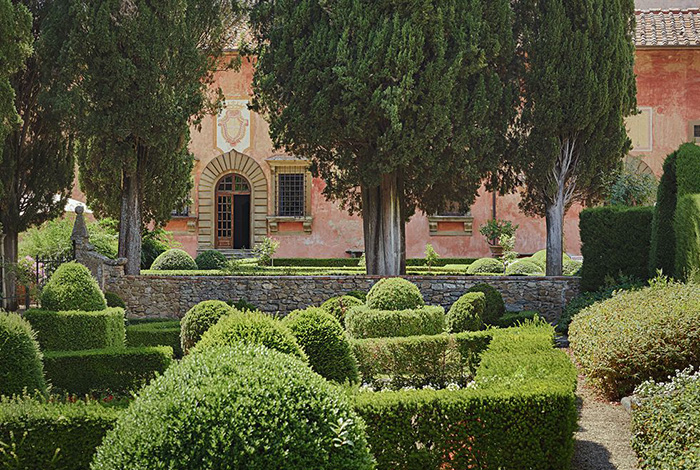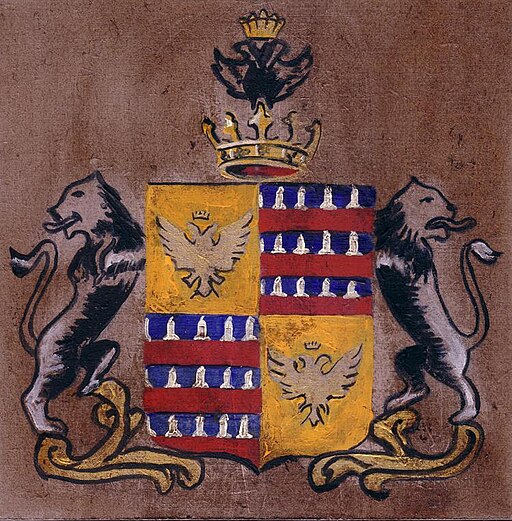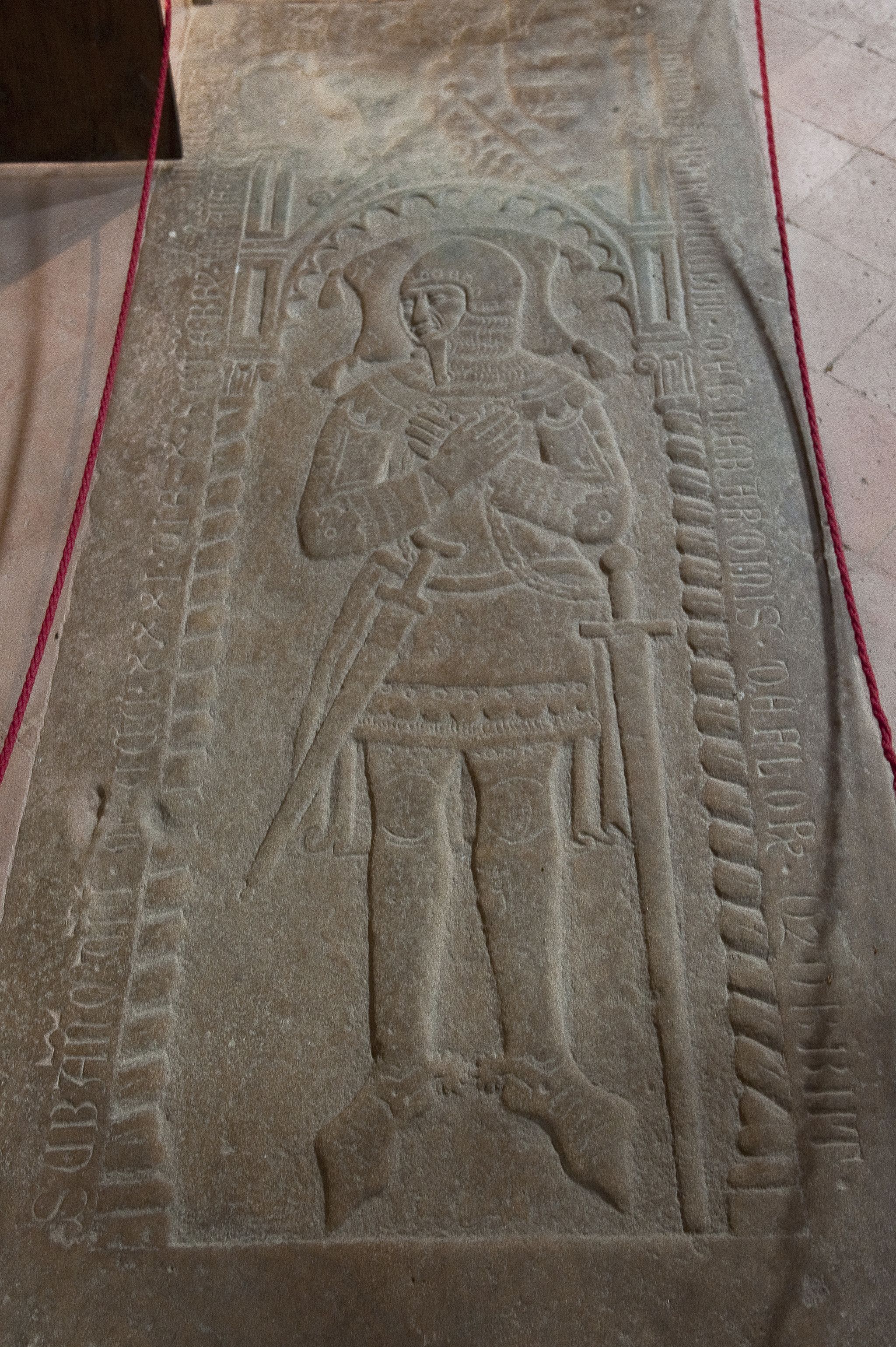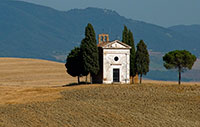 |
|
| |
Villa Vignamaggio
|
Villa Vignamaggio |
Villa Vignamaggio just outside Greve in Chianti, in Petriolo. The villa at Vignamaggio was built by the Gherardini family in the XIV century. Between the 9th and 14th centuries, the Gherardini family played an important role in Tuscany. Its influence was also felt in the Veneto and Emilia regions between the 16th and 18th centuries and during the Italian Risorgimento.[1] The family’s restless and fighting nature has aroused the curiosity of many historians of the Middle Ages. Originating from the feudal tradition, it was one of the founding families of the Republic of Florence. The family took part in Florence's political life between 1100 and 1300. In 1300, it was exiled from the city when Florence began its transformation into a Signoria. In his Divine Comedy, Dante Alighieri, who was exiled with the Gherardini, placed the family in Paradise's V-Sphere. [1] The Renaissance garden we see here today was designed in the 1930’s by Bino Sanminiatelli who, inspired by Italian Renaissance gardens, extended it with the intention of «uniting the forest and the house, by means of an avenue of Cypresses through the land where the forest was before». [2]
|
Films set in Tuscany Much Ado about Nothing (Kenneth Branagh, 1993)
|
||
| Movies set in Tuscany | Much Ado about Nothing (Kenneth Branagh, 1993) | ||
|
||
Map |
||
[1] The family is described in documents dating back to that period and kept in the Church of San Miniato in Florence. They were feudatories in the Chianti and the Val d'Elsa areas and settled in Florence in 1100 following the death of Matilda of Tuscany. They founded the Republic of Florence. Two centuries later, they took part in the fights between the Guelphs and the Ghibellines and subsequently between the White and Black Guelphs; they were with the "White" faction and were opposed to the transformations which led to the birth of the Signoria. Oneof the leading figures of the family during that period was Gherarduccio Gherardini, whose tombstone in the Church of Sant'Appiano is the oldest knightly tomb in Tuscany. Civil War and Exile After the fall of Montagliari, and the subsequent loss of their land and properties in Val d'Elsa, the last Gherardinis (except a small group) went into exile to Verona that, at that time, was under the Empire. Dante Alighieri went into exile with them too. At the same time, the Florentines finished to destroy the Gherardinis' buildings in the city as well as other evidence of their life there. This was their third exodus. The previous expulsion of the Ghibellinis, half a century earlier, meant that some Gherardinis moved near Verona and Rovigo (they came together again later on). The first exodus took place around 1120 with the death of Matilda of Tuscany. One of the heads of the family, Gherardino, and his children (Tommaso, Gherardo and Maurizio) decided to leave Tuscany.
[2] Source: The Italian Gardens | www.vignamaggio.com
|
|
|||
This article incorporates material from the Wikipedia articles Gherardini family and Lisa del Giocondo published under the GNU Free Documentation License.
|
||||
Situated in the spectacular scenario of the Tuscan countryside and hills, Podere Santa Pia is the ideal property for a holiday accommodation and vacation in Tuscany. The house is an authentic holiday home in Castiglioncello Bandini, a small village in the Maremma, in the south of Tuscany, situated half way between Florence and Rome and close to Montalcino, Arcidosso and Monte Amiata. Some of the most beautiful Tuscan villas and gardens are within easy reach. A generous garden sweeps down the hill with olive and downy oak trees and various areas for relaxing and soaking in the views. The cool shadow of centuries-old oak trees, the thousand colors of the garden changing at each season make of this place a natural oasis. Tuscan Holiday houses | Podere Santa Pia |
||||
|
||||
Podere Santa Pia |
Podere Santa Pia, view from the garden on the valley below |
Capella Vialetta, near Pienza |
||






